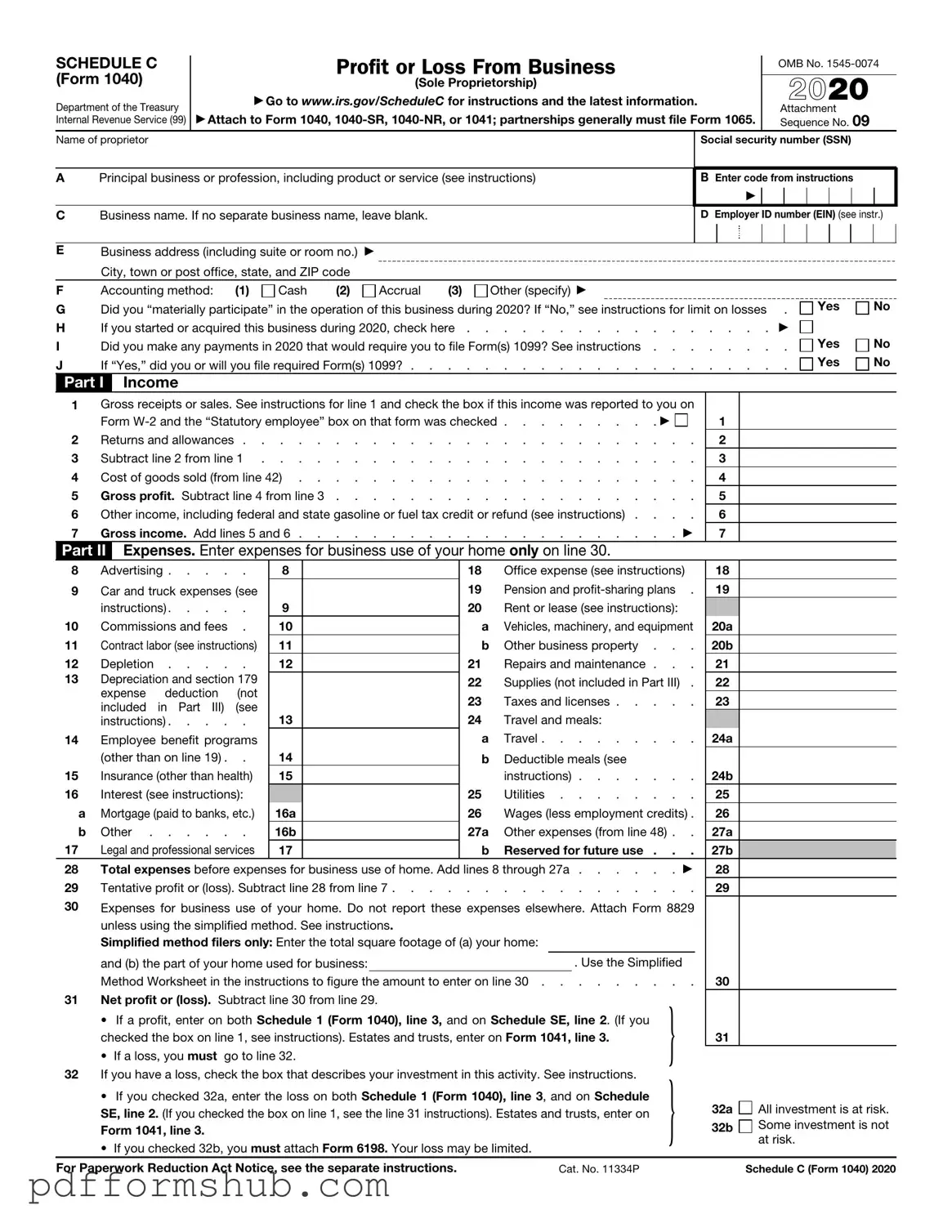The IRS Schedule C (Form 1040) is a crucial document for individuals who operate their own businesses as sole proprietors. This form allows self-employed individuals to report their income and expenses, ultimately determining their net profit or loss for the year. By detailing various aspects of business operations, Schedule C provides a comprehensive overview of a taxpayer's financial performance. It includes sections for reporting gross receipts, cost of goods sold, and various business expenses such as rent, utilities, and advertising costs. Additionally, the form requires information about the business, including its name and address, as well as the principal business activity. Understanding how to accurately complete Schedule C is vital, as it directly affects one's taxable income and overall tax liability. Moreover, the form serves as a key tool for claiming certain deductions that can significantly reduce the amount owed to the IRS. For those navigating the complexities of self-employment, mastering Schedule C is an essential step in ensuring compliance and optimizing tax outcomes.
